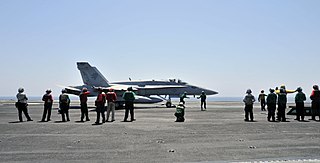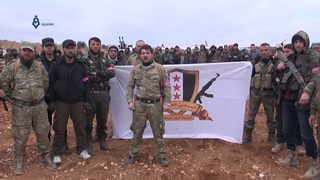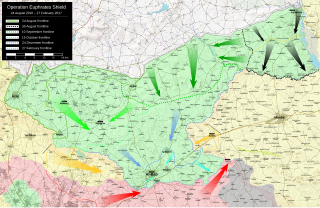This is a broad timeline of the course of major events of the Syrian civil war. It only includes major territorial changes and attacks and does not include every event.
As the civil uprising phase of the Syrian Civil War turned into an all-out civil war, the 911-kilometre-long (600 mi) Syria–Turkey border became the scene of minor military clashes between the Turkish Army and various factions in the war to the south.

Following the outbreak of the protests of Syrian revolution during the Arab Spring in 2011 and the escalation of the ensuing conflict into a full-scale civil war by mid-2012, the Syrian Civil War became a theatre of proxy warfare between various regional powers such as Turkey and Iran. Spillover of the Syrian civil war into the wider region began when the Iraqi insurgent group known as the Islamic State of Iraq (ISI) started intervening in the conflict from 2012.
The following is a timeline of the Syrian civil war from August to December 2014. Information about aggregated casualty counts is found at Casualties of the Syrian Civil War.

Many states began to intervene against the Islamic State, in both the Syrian Civil War and the War in Iraq (2013–2017), in response to its rapid territorial gains from its 2014 Northern Iraq offensives, universally condemned executions, human rights abuses and the fear of further spillovers of the Syrian Civil War. These efforts are called the war against the Islamic State, or the war against ISIS. In later years, there were also minor interventions by some states against IS-affiliated groups in Nigeria and Libya. All these efforts significantly degraded the Islamic State's capabilities by around 2019–2020. While moderate fighting continues in Syria, as of 2024, ISIS has been contained to a manageably small area and force capability.

On 22 September 2014, the United States officially intervened in the Syrian civil war with the stated aim of fighting the terrorist organization ISIS in support of the international war against it, code named Operation Inherent Resolve. The US currently continues to support the Syrian rebels and the Kurdish-led Syrian Democratic Forces opposed to both the Islamic State and Syrian president Bashar al-Assad.

The siege of Kobanî was launched by the Islamic State of Iraq and the Levant on 13 September 2014, in order to capture the Kobanî Canton and its main city of Kobanî in northern Syria, in the de facto autonomous region of Rojava.

On 15 June 2014, U.S. President Barack Obama ordered United States forces to be dispatched in response to the Northern Iraq offensive of the Islamic State (IS) as part of Operation Inherent Resolve. At the invitation of the Iraqi government, American troops went to assess Iraqi forces and the threat posed by ISIL.

Turkey's involvement in the Syrian Civil War began diplomatically and later escalated militarily. Initially, Turkey condemned the Syrian government at the outbreak of civil unrest in Syria during the spring of 2011; the Turkish government's involvement gradually evolved into military assistance for the Free Syrian Army in July 2011, border clashes in 2012, and direct military interventions in 2016–17, in 2018, in 2019, 2020, and in 2022. The military operations have resulted in the Turkish occupation of northern Syria since August 2016.

The Timeline of the War in Iraq covers the War in Iraq, a war which erupted that lasted in Iraq from 2013 to 2017, during the first year of armed conflict.

The Turkey–Islamic State conflict were a series of attacks and clashes between the state of Turkey and the Islamic State. Turkey joined the War against the Islamic State in 2016, after the Islamic State attacks in Turkey. The Turkish Armed Forces' Operation Euphrates Shield was aimed against both the Islamic State and the SDF. Part of Turkish-occupied northern Syria, around Jarabulus and al-Bab, was taken after Turkey drove the Islamic State out of it.
The following is a timeline of the Syrian Civil War from January to July 2015. Information about aggregated casualty counts is found at Casualties of the Syrian Civil War.
In early 2014, the jihadist group Islamic State of Iraq and the Levant captured extensive territory in Western Iraq in the Anbar campaign, while counter-offensives against it were mounted in Syria. Raqqa in Syria became its headquarters. The Wall Street Journal estimated that eight million people lived under its control in the two countries.
This article contains a timeline of events from January 2015 to December 2015 related to the Islamic State of Iraq and the Levant (ISIL/ISIS). This article contains information about events committed by or on behalf of the Islamic State, as well as events performed by groups who oppose them.

Operation Euphrates Shield was a cross-border military operation conducted by the Turkish Armed Forces in the Syrian Civil War which led to the Turkish occupation of northern Syria. Operations were carried out in the region between the Euphrates river to the east and the rebel-held area around Azaz to the west. The Turkish military and Turkey-aligned Syrian rebel groups, some of which used the Free Syrian Army label, fought against the forces of the Islamic State (IS) as well as against the Syrian Democratic Forces (SDF) from 24 August 2016. On 29 March 2017, the Turkish military officially announced that Operation Euphrates Shield was "successfully completed".
The following is a timeline of the Syrian Civil War from September to December 2017. Information about aggregated casualty counts is found at Casualties of the Syrian Civil War.
The following is a timeline of the Syrian Civil War from January to April 2018. Information about aggregated casualty counts is found at Casualties of the Syrian Civil War.

The US intervention in the Syrian civil war is the United States-led support of Syrian opposition and the Federation of Northern Syria during the course of the Syrian Civil War and active military involvement led by the United States and its allies — the militaries of the United Kingdom, France, Jordan, Turkey, Canada, Australia and more — against the Islamic State of Iraq and the Levant (ISIL) and al-Nusra Front since 2014. Since early 2017, the U.S. and other Coalition partners have also targeted the Syrian government and its allies via airstrikes and aircraft shoot-downs.
The following is a timeline of the Syrian civil war for 2021. Information about aggregated casualty counts is found at Casualties of the Syrian civil war.
The following is a timeline of the Syrian civil war for 2022. Information about aggregated casualty counts is found in Casualties of the Syrian civil war.







